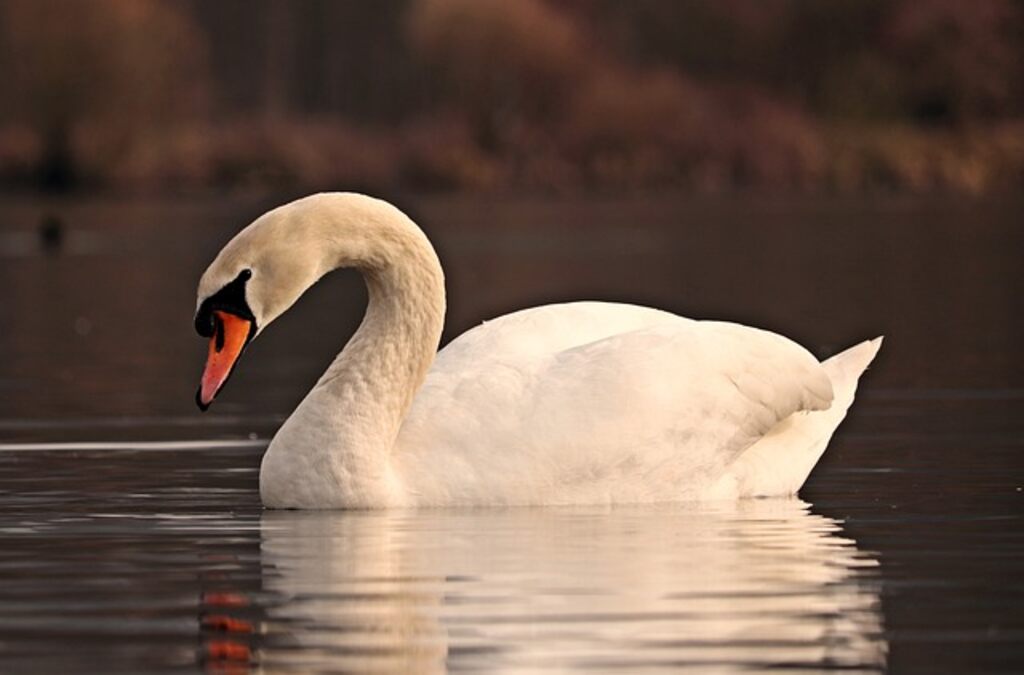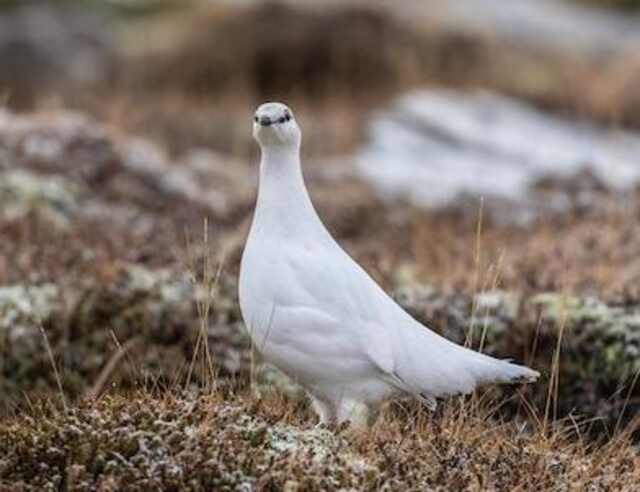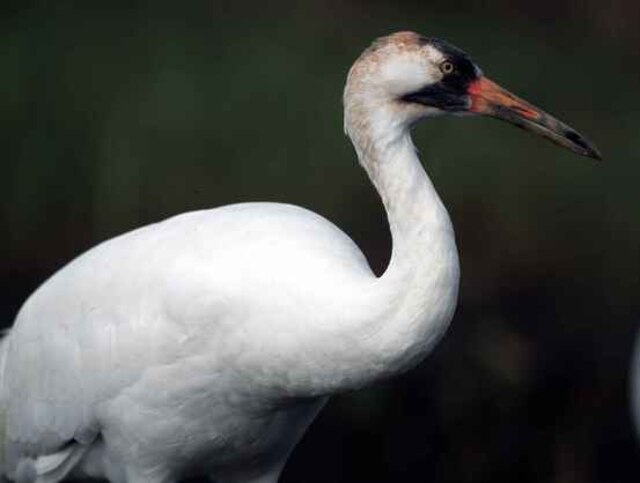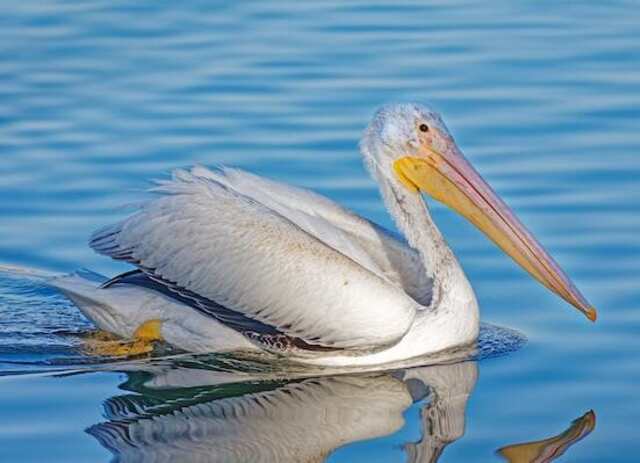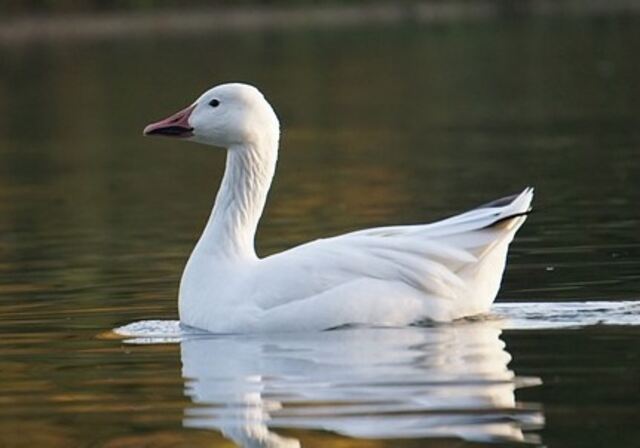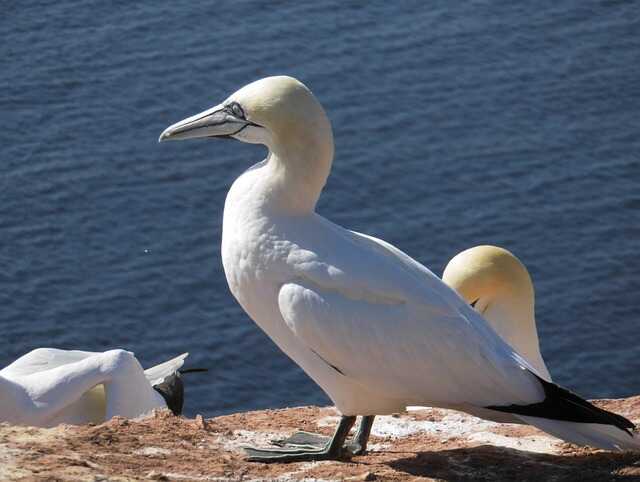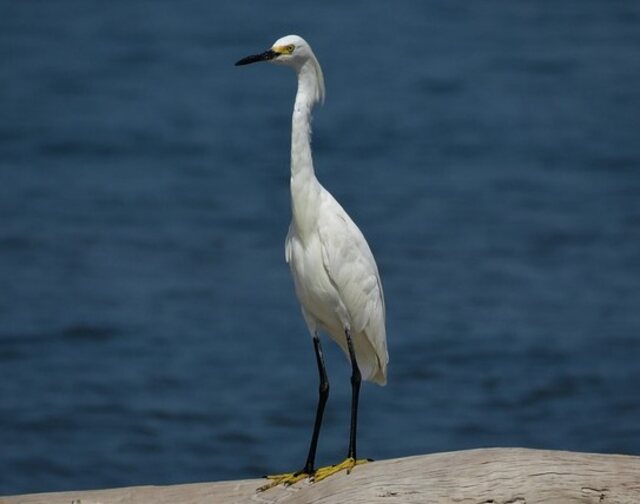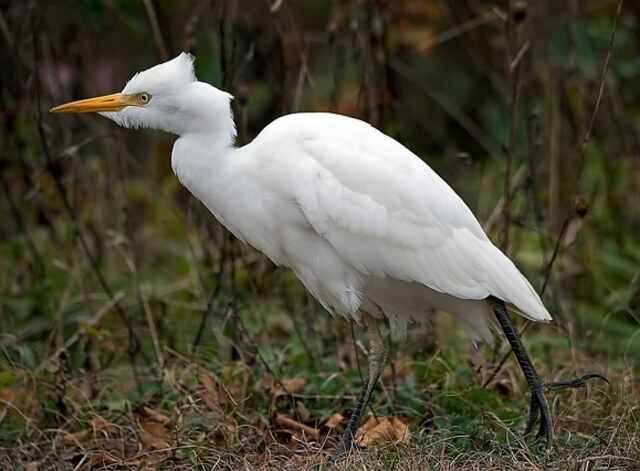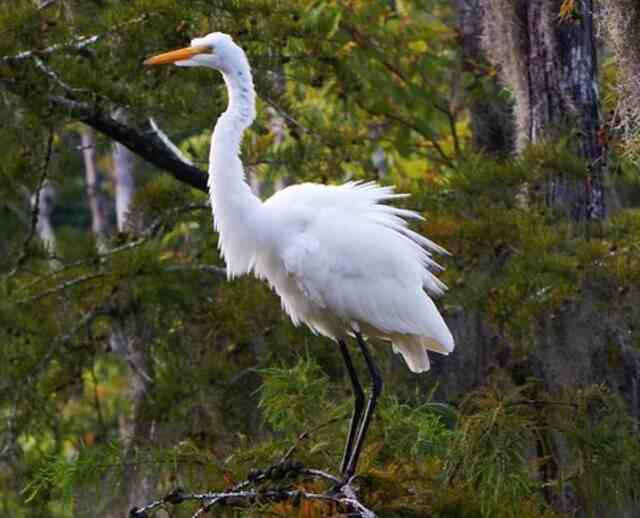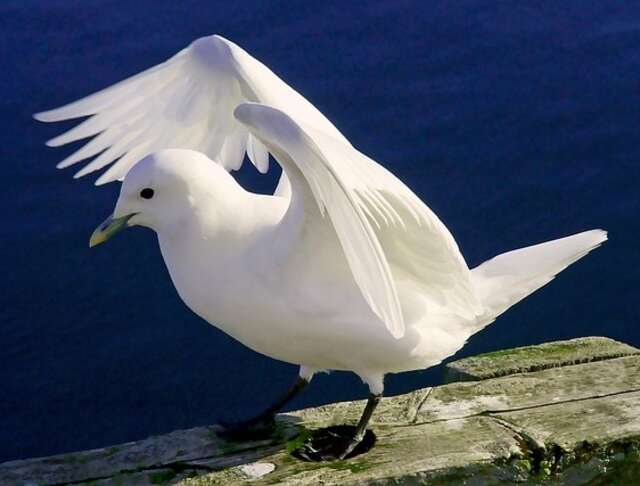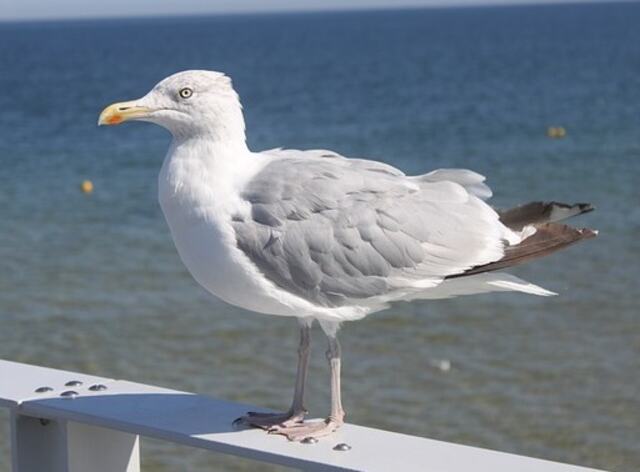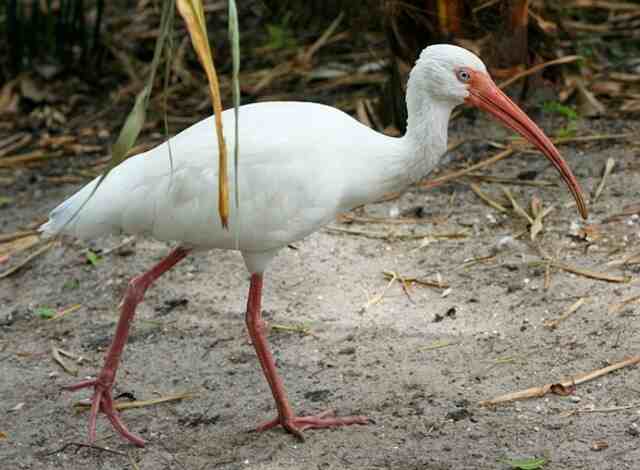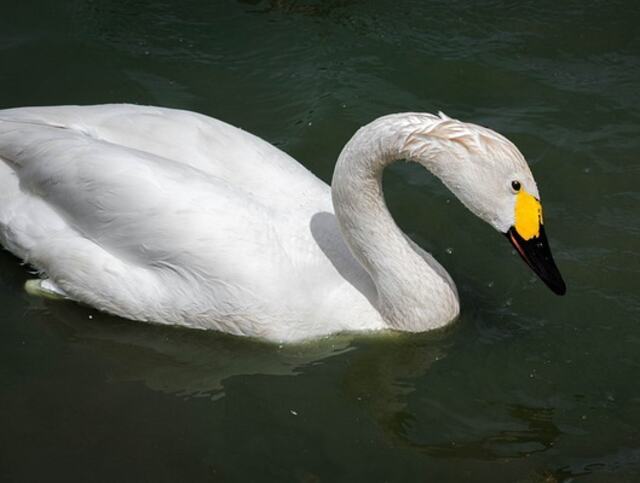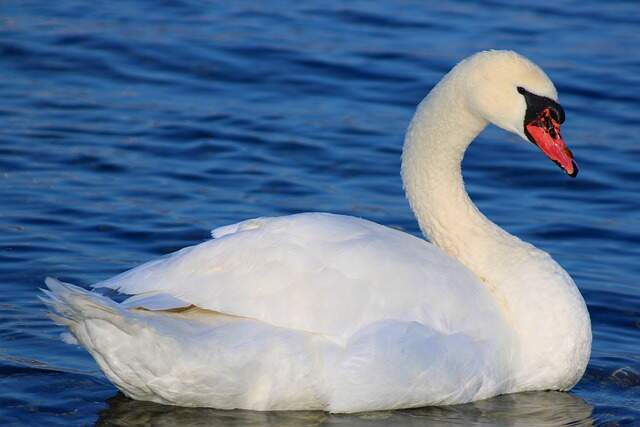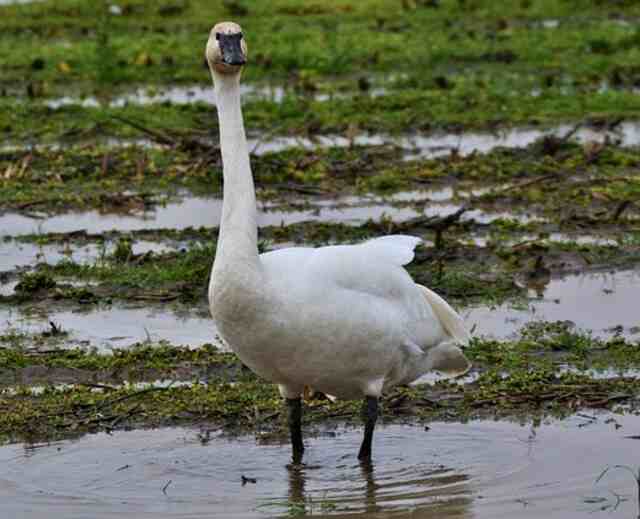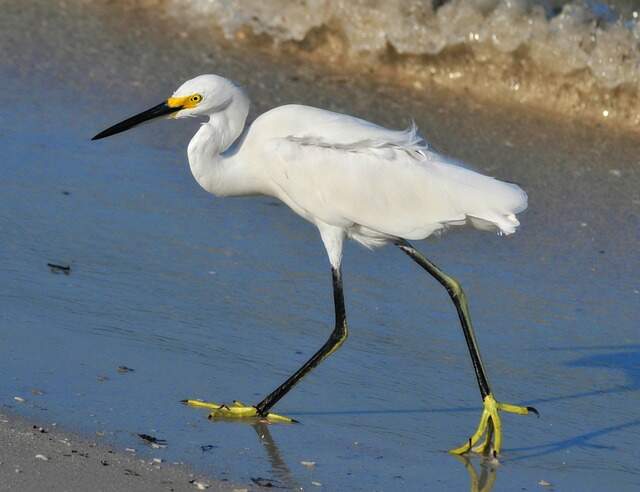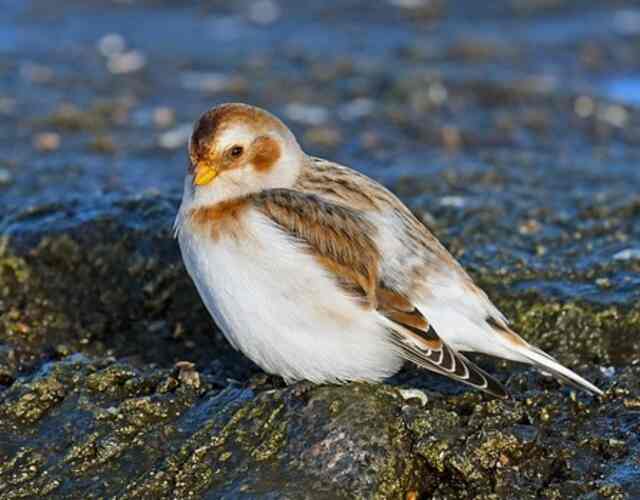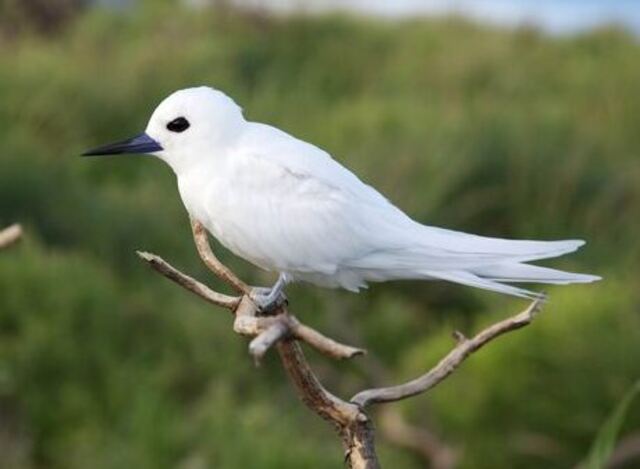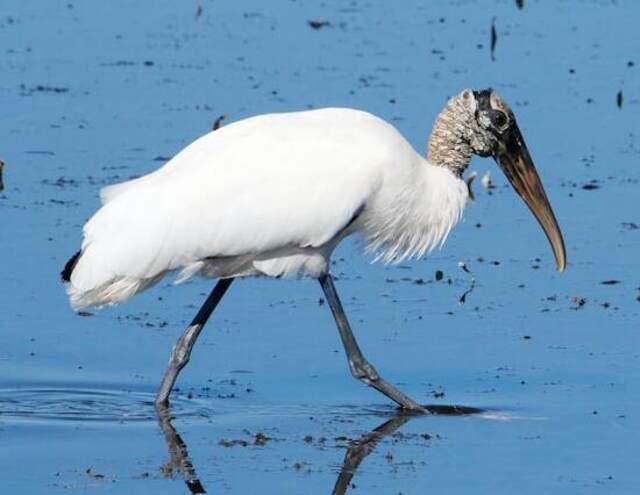The natural world is full of wonders and surprises, and one of the most remarkable sights is a bird with white feathers. These stunning creatures capture our imagination with their beauty and grace, and they can be found in a wide range of habitats and environments all around the world.
From the snowy owl of the Arctic tundra to the swan of the tranquil lake, birds with white feathers are some of the most beloved and awe-inspiring creatures on the planet.
In this article, we’ll take a look at 24 of the most stunning birds with white feathers, exploring their unique characteristics, habitats, and behaviors. So buckle up and get ready to be amazed by the incredible diversity of these beautiful creatures!
Table of Contents
- 1 Why White Feathers Are Unique?
- 2 Why Birds Have White Feathers?
- 3 Functions of White Feathers
- 4 Types of Birds With White Feathers
- 4.1 Rock Ptarmigan
- 4.2 Whooping Crane
- 4.3 American White Pelican
- 4.4 Snow Goose
- 4.5 Northern Gannet
- 4.6 Little Egret
- 4.7 Cattle Egret
- 4.8 Great Egret
- 4.9 Ivory Gull
- 4.10 Herring Gull
- 4.11 White Ibis
- 4.12 Ring-billed Gull
- 4.13 Tundra Swan
- 4.14 Mute Swan
- 4.15 Trumpeter Swan
- 4.16 Snowy Egret
- 4.17 Snow Bunting
- 4.18 Snowy Owl
- 4.19 White Tern
- 4.20 Forster’s Tern
- 4.21 Wood Stork
- 4.22 Elegant Tern
- 4.23 Royal Tern
- 5 Conclusion
- 6 Author
Why White Feathers Are Unique?
White feathers are unique in several ways, primarily due to their coloration and function. They are different from other colored feathers, which typically have pigments that give them their coloration.
The white color of feathers is produced by a combination of structural and optical features. The keratin-based structure of feathers scatters light, producing a white color, while air pockets in the feathers enhance this effect.
Why Birds Have White Feathers?
Birds have white feathers for various reasons, including camouflage, communication, attracting mates, and thermoregulation.
The function of white feathers can differ depending on the species of bird and the environment in which they live.
Functions of White Feathers
Camouflage
White feathers can help birds blend in with their surroundings, especially in snowy or icy environments. Many birds, such as snowy owls, ptarmigans, and arctic terns, have evolved white plumage to conceal themselves from predators or prey.
The white feathers provide a form of camouflage by making the bird less visible against the snowy background, making it easier for the bird to move unseen.
Communication
White feathers can also play a role in communication. For example, some birds, such as doves and swans, use their white feathers to signal to others of their species.
When birds display their white feathers, they are communicating a message, such as aggression or submission, to other birds.
Attracting Mates
In some bird species, males with bright white feathers are more attractive to females. The white feathers signal health and genetic fitness, indicating that the male is a suitable mate.
The white coloration of feathers is also an indication of good nutrition and breeding success, which makes them more attractive to potential mates.
Thermoregulation
White feathers can also help birds regulate their body temperature. In hot environments, white feathers reflect sunlight, reducing the amount of heat that is absorbed by the bird’s body.
In contrast, in colder environments, white feathers trap heat close to the bird’s skin, providing insulation and helping to maintain body temperature.
Types of Birds With White Feathers
Rock Ptarmigan
Rock Ptarmigans are white birds found in the tundras and rocky areas of the Arctic and sub-Arctic regions. These birds are easily identifiable due to their pure white feathers that blend with their surroundings during the winter months. In the spring and summer, the male Rock Ptarmigans develop a black patch above their eyes and a red patch over their eyes, making them easy to spot.
They feed on a diet of twigs, buds, and seeds, and their white feathers serve as camouflage from predators such as foxes, hawks, and eagles. The Rock Ptarmigans’ white feathers also provide insulation from the cold Arctic temperatures, making them well adapted to their harsh environment.
Whooping Crane
The Whooping Crane is an iconic bird with distinct white feathers that make it easy to spot. This species is the tallest bird in North America, with a height of up to 5 feet! They have a wingspan of 7.5 feet and weigh up to 15 pounds. Whooping Cranes can be found in the Midwest and Southern regions of North America, with a breeding range that extends from Canada to Texas.
Their preferred habitat includes wetlands, marshes, and shallow ponds. These birds are omnivores and feed on a variety of foods, including insects, crustaceans, and small mammals. The purpose of their white feathers is to blend in with the snowy environment, making them harder to spot by predators.
Read more: 48 Interesting Facts About Whooping Cranes (Detailed)
American White Pelican
The American White Pelican is a sight to behold with its massive wingspan and unmistakable white plumage. These birds can be easily identified by their large, long beaks, which are used to scoop up fish from the water. They have a wingspan of up to 9 feet and can weigh up to 30 pounds, making them one of the largest birds in North America.
Their range extends from western Canada down to Mexico and Central America, and they can be found in a variety of habitats, including lakes, rivers, and estuaries. Their diet primarily consists of fish, and their white feathers may help to reflect sunlight and keep them cool while feeding in shallow waters.
Snow Goose
The Snow Goose, or Blue Goose, is a magnificent bird with predominantly white feathers and black primary feathers, beak, legs, and feet. They are recognized by their honking calls and their V-shaped flying pattern during migration. These birds have a strong wingspan that can measure up to 4 feet in length.
Snow Geese breed in the Arctic tundra and winter in the southern United States and Mexico. They are herbivores, consuming vegetation such as grasses, sedges, and berries, as well as agricultural crops. The purpose of their white feathers is for camouflage in the Arctic tundra and as a display during courtship.
Northern Gannet
The Northern Gannet is a stunning seabird with white feathers that make it stand out. It’s easy to identify with its long and pointed beak, blue eyes, and black-tipped wings. These birds are large, with a wingspan of up to 6 feet, and well adapted to marine life. They are skilled divers, capable of plunging up to 130 feet to catch fish.
Northern Gannets breed along the North Atlantic, from Newfoundland to the British Isles, and can be found in the open sea during migration. Their diet consists mainly of fish, which they catch by diving from great heights. The purpose of their white feathers is to help them blend in with the sea’s surface, making them less visible to predators.
Little Egret
The Little Egret, also known as Egretta garzetta, is a small, elegant bird that is easily identifiable by its snow-white plumage and thin, black bill. With a wingspan of up to 90 cm, this bird is known for its graceful movements and delicate appearance. It can be found in a wide range of habitats, including estuaries, marshes, and wetlands throughout Europe, Asia, and Africa.
The Little Egret is a skilled hunter, feeding primarily on small fish and aquatic invertebrates. Its white feathers serve a dual purpose, providing camouflage in its aquatic habitat while also attracting prey with its bright appearance. Additionally, during the breeding season, the Little Egret’s white feathers are used in courtship displays to attract a mate.
Cattle Egret
The Cattle Egret, a small heron with a white plumage, is easily identified by its short, thick bill, yellowish-orange legs, and the yellow-orange skin around its eyes. It can grow up to 50 cm tall and has a wingspan of 90 cm. They are native to Africa but have expanded their range widely and now inhabit most of the world.
They prefer open grasslands, wetlands, and farmlands where they feed on insects, small mammals, reptiles, and sometimes fish. The white feathers on their body are not just for beauty; they help reflect sunlight, reducing heat stress while they forage in open fields. The Cattle Egret is a fascinating bird species with unique adaptations to its environment.
Read more: 52 Fun Facts About Cattle Egrets (with Photos, ID & Info)
Great Egret
The Great Egret (Ardea alba) is a majestic bird with a wingspan of up to 1.5 meters. Its all-white plumage, long neck, and black legs make it easy to identify. They are found in a wide range of habitats, including freshwater and saltwater wetlands, marshes, and shallow lakes. Their distribution range spans across all continents except Antarctica, with the largest populations found in North America, Europe, and Asia.
Great Egrets are opportunistic predators, feeding on fish, amphibians, reptiles, insects, and small mammals. The purpose of their snowy white feathers is to attract mates during breeding season and to reflect sunlight to keep them cool in warmer climates. The Great Egret is an explosive species, often seen darting and lunging for prey with quick and sudden movements.
Read more: 54 Fun Facts About Great Egrets (with Photos, ID & Info)
Ivory Gull
The Ivory Gull is a truly unique and fascinating bird. With its striking all-white plumage, it is easily identifiable and stands out among other Arctic bird species. Its habitat and distribution range make it a true Arctic icon, and it is an important part of the fragile Arctic ecosystem. One of the most interesting characteristics of the Ivory Gull is its behavior as a scavenger.
While it is not a picky eater, its diet can be quite unusual, including scavenging on polar bear carcasses or feeding on discarded fishing gear. The white feathers of the Ivory Gull serve as excellent camouflage in its snowy habitat, helping it to blend in with the ice and avoid detection by predators. The Ivory Gull is truly a remarkable bird and a wonder of the Arctic.
Herring Gull
The Herring Gull is a large, white-headed gull with a yellow bill and pinkish legs. The wingspan of this bird can extend up to five feet. It is found in coastal areas and near bodies of water across North America, Europe, and Asia. They are adaptable and can be found in a variety of habitats, including beaches, cliffs, and urban areas.
Their diet consists of fish, insects, and small mammals, and they have been known to scavenge food from garbage dumps. The purpose of their white feathers is to help them blend into their surroundings and stay camouflaged from predators while nesting on rocky shorelines. Despite their ubiquity, the Herring Gull is a fascinating bird with a unique set of characteristics.
White Ibis
The White Ibis is a bird species with a distinct white plumage, black-tipped wings, and a long, curved beak. They are usually 22-27 inches tall and weigh around 1.5 pounds. These birds are primarily found in the southeastern United States, Caribbean islands, and parts of Central and South America. White Ibises are usually found in wetlands and shallow freshwater habitats, where they feed on small aquatic animals like fish, crustaceans, and insects.
Their white feathers serve multiple purposes: they help to camouflage the bird in their wetland habitats, and also signal to other members of their species during courtship displays. Despite being relatively common, habitat loss and degradation remain significant threats to the White Ibis population.
Ring-billed Gull
The Ring-billed Gull (Larus delawarensis) is a medium-sized gull that can be identified by its yellow bill with a black ring around it. They have white head and underparts, gray wings with black tips, and a white tail. Ring-billed Gulls are found throughout North America, breeding near freshwater lakes, rivers, and marshes, and wintering along coastal areas.
They feed on a variety of food, including fish, insects, crustaceans, and even garbage. Interestingly, the purpose of the white feathers on their wings is to attract mates during breeding season. The burstiness of their behavior can be observed when they congregate in large numbers during migration, creating a raucous and chaotic spectacle.
Tundra Swan
The Tundra Swan, also known as the whistling swan, is a large waterfowl species recognized for its snowy-white plumage, black bill, and striking black feet. These birds measure up to 1.5 meters long and weigh around 7 kilograms. They breed in the Arctic tundra and migrate in large flocks to winter in wetlands and agricultural fields. Tundra swans prefer shallow ponds, lakes, and rivers as their habitat.
They feed primarily on aquatic plants, roots, and insects, but may also consume small fish and crustaceans. The swan’s white feathers serve a purpose of camouflage, protection from cold, and communication with other swans. Bursting with beauty, these swans are a true wonder of nature.
Mute Swan
The Mute Swan (Cygnus olor) is a large, elegant bird with a distinctive curved neck and an orange bill with a black knob at the base. They can weigh up to 15 kg and measure up to 1.5 meters in length. These birds are widespread in Europe and Asia, with introduced populations in North America and Australia.
They prefer freshwater habitats such as lakes, rivers, and ponds, where they feed on aquatic vegetation, insects, and small fish. One of the unique features of Mute Swans is their pure white feathers, which are used for display and courtship rituals. However, their feathers also have a practical purpose, providing insulation and waterproofing.
Trumpeter Swan
The Trumpeter Swan, North America’s largest waterfowl, is easily identifiable by its impressive wingspan, long neck, and snow-white feathers. These magnificent creatures can weigh up to 30 pounds and measure up to six feet in length. Their distribution range stretches from Alaska to the Great Lakes region, with populations also found in the Pacific Northwest and the Rocky Mountains.
Trumpeter Swans prefer freshwater habitats, such as lakes, ponds, and rivers, and feed primarily on aquatic vegetation and insects. The purpose of their white feathers is not just for show – they serve as camouflage in the snowy landscape, and their reflective nature helps keep them warm during the winter months.
Snowy Egret
The Snowy Egret (Egretta thula) is a beautiful bird known for its pure white plumage, black legs, and yellow feet. They are relatively small, standing at around two feet tall with a wingspan of three feet. Snowy Egrets can be found across the Americas, from the United States to Chile, with some populations also found in the Caribbean. They prefer to live near water, such as marshes, ponds, and coastal lagoons.
Snowy Egrets feed on small fish, crustaceans, and insects, using their bright yellow feet to stir up prey in shallow water. Their white feathers serve a purpose beyond aesthetics – they help to reflect sunlight, keeping the bird cool in warmer temperatures. Despite their delicate appearance, Snowy Egrets are fierce predators and skilled hunters.
Read more: 59 Interesting Facts About Snowy Egrets (Photos, ID, & Info)
Snow Bunting
The Snow Bunting is a small passerine bird species known for its striking appearance and unique behaviors. Identifying features include its white plumage, black wingtips, and yellow bill. These birds breed in the Arctic and are found in open tundra and rocky areas. They are known for their erratic and energetic flight patterns and their tendency to gather in large flocks.
Snow Buntings primarily feed on seeds and insects, and during winter, they will eat from bird feeders. Interestingly, male Snow Buntings molt into a pure white plumage during the breeding season, which may serve as a signal of their fitness to potential mates.
Snowy Owl
The Snowy Owl is a magnificent bird of prey that is instantly recognizable due to its distinctive white feathers. This bird has piercing yellow eyes, a large wingspan of up to 5 feet, and a body length of around 2 feet. The Snowy Owl is found throughout the Arctic region, including parts of North America, Europe, and Asia.
They inhabit open tundra, and their diet consists mainly of lemmings, but they will also eat other small mammals, birds, and fish. The purpose of their white feathers is to provide camouflage against the snowy terrain, making them an efficient hunter. Despite being a symbol of resilience, Snowy Owl populations have been decreasing due to climate change and human interference.
Read more: 48 Fun Facts About Snowy Owls (Full Guide with Photos!)
White Tern
The White Tern, also known as the Fairy Tern, is a distinctive seabird that is easily recognizable by its pure white plumage and long, slender wings. It has a black beak and black eyes, giving it a striking appearance. These birds are found throughout the tropical and subtropical regions of the world, including the Caribbean, Hawaii, and the Indian Ocean.
They prefer to nest on small islands, atolls, and coral reefs. Their diet consists mainly of small fish and squid, which they catch by diving into the water from great heights. Interestingly, their white feathers serve a dual purpose: they help to camouflage the birds against the bright sky, and they also protect them from the heat of the sun.
Forster’s Tern
Forster’s Tern, a small bird belonging to the tern family, is identified by its white forehead, black cap, and orange-red beak. It has long, pointed wings and a deeply forked tail. This bird species is typically found in North America, ranging from Alaska to the Gulf of Mexico. Its habitat includes marshes, coastal lagoons, and beaches.
Forster’s Tern primarily feeds on small fish, but it also eats insects and crustaceans. The purpose of the white feathers on its underside is to make it more visible to fish while diving for prey. This burst of white is a fascinating adaptation of the Forster’s Tern that allows it to survive in its aquatic habitat.
Wood Stork
The Wood Stork (Mycteria americana) is a distinctive bird with a unique appearance. It has a bald, black head with a long, curved bill, and its body is covered in white feathers with black flight feathers. They can grow up to four feet tall with a six-foot wingspan. Wood Storks are found primarily in the southeastern United States, Mexico, and South America.
They prefer to live in wetlands such as marshes, swamps, and ponds. Their diet mainly consists of fish, but they also eat crustaceans, amphibians, and insects. The purpose of their white feathers is not fully understood, but it is believed that they may help attract a mate or regulate body temperature.
Elegant Tern
The Elegant Tern, scientific name Thalasseus elegans, is a seabird found along the Pacific coasts of the Americas. This medium-sized bird has a distinctive black cap, a pointed orange bill, and gray wings with white underparts. The Elegant Tern is known for its long, forked tail and sharp, angular wings. These birds primarily feed on small fish and invertebrates that they capture by diving into the water from the air.
One interesting feature of the Elegant Tern is its white feathers, which are believed to help reflect sunlight and keep the bird cool in hot, sunny climates. These birds are most commonly found nesting on sandy beaches, salt flats, and rocky shores, making them a familiar sight for coastal residents and visitors alike.
Royal Tern
The Royal Tern (Thalasseus maximus) is a seabird species that belongs to the family Laridae. It has a distinctive appearance, with a forked tail, sharp bill, and bright orange bill and feet. They can be identified by their pale gray back and wings and white underparts. These birds are found along the coasts of the Americas, from the southern United States to Argentina.
They inhabit sandy beaches, estuaries, and lagoons, where they feed on small fish and crustaceans. The purpose of the white feathers on their heads is thought to be for communication and attracting mates. These birds exhibit crazy mating rituals during breeding season, when they gather in large colonies to mate and raise their young.
Conclusion
In conclusion, birds with white feathers are some of the most stunning and graceful creatures in the world. From the majestic snowy owl to the elegant swan, these birds capture our imaginations and inspire us with their beauty.
Whether they use their white feathers for camouflage, communication, or temperature regulation, these birds remind us of the diversity and wonder of the natural world.
Exploring the many different species of birds with white feathers is a great way to appreciate the remarkable adaptations and characteristics of these fascinating creatures.
Related Post: 9 Small Black And White Birds – Ultimate Field Guide

